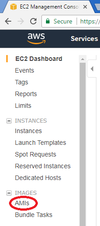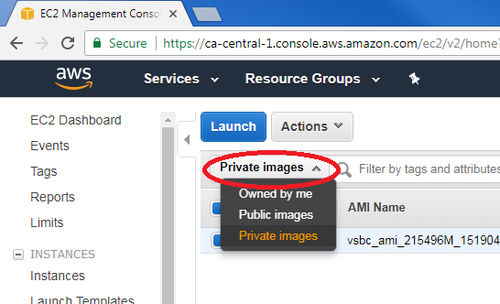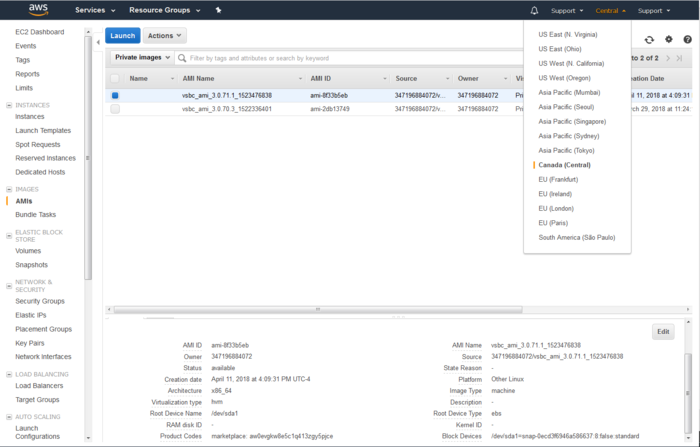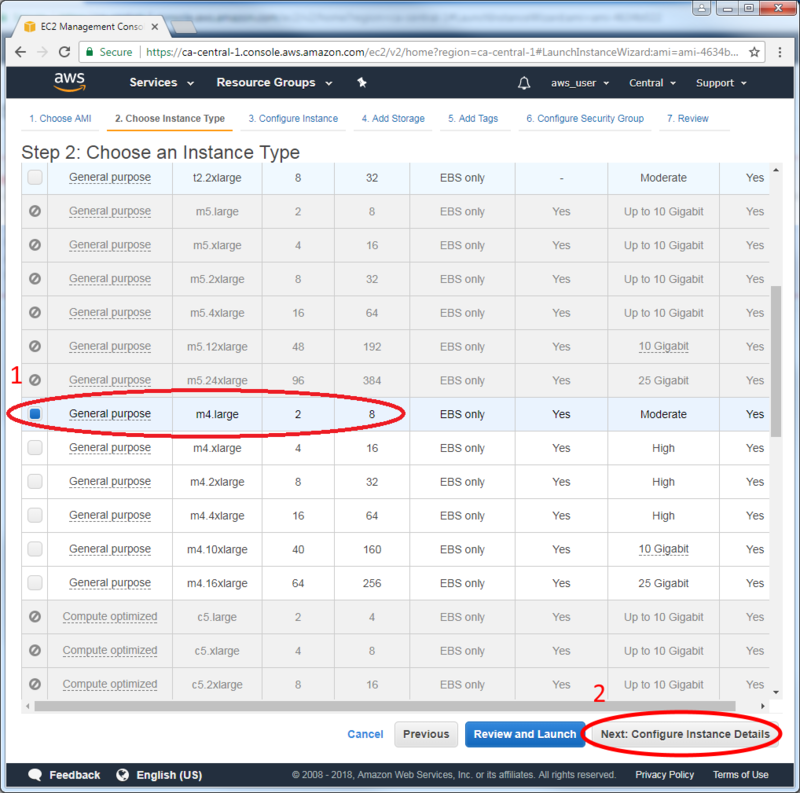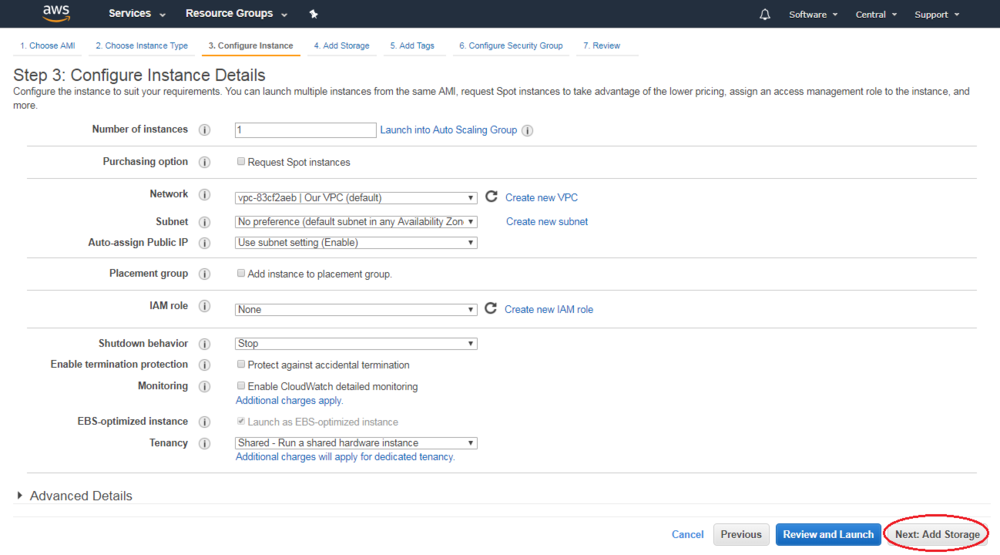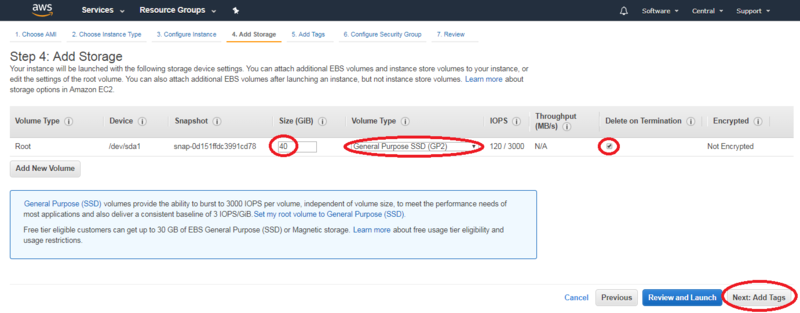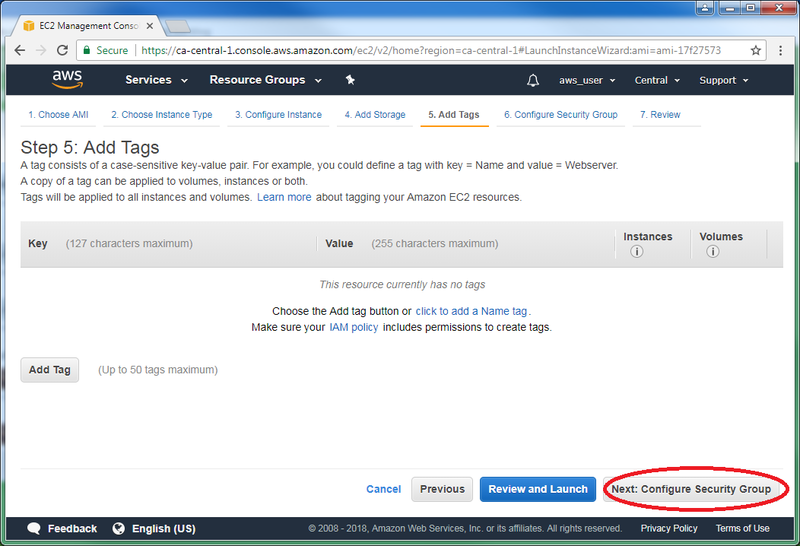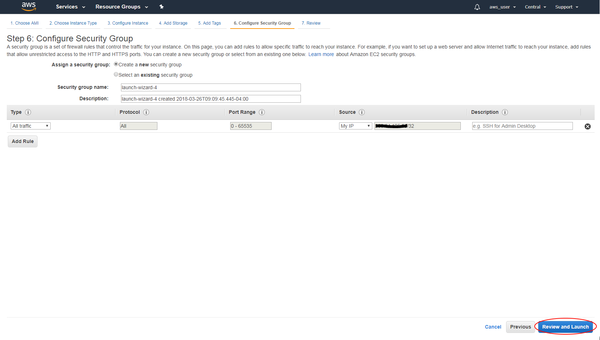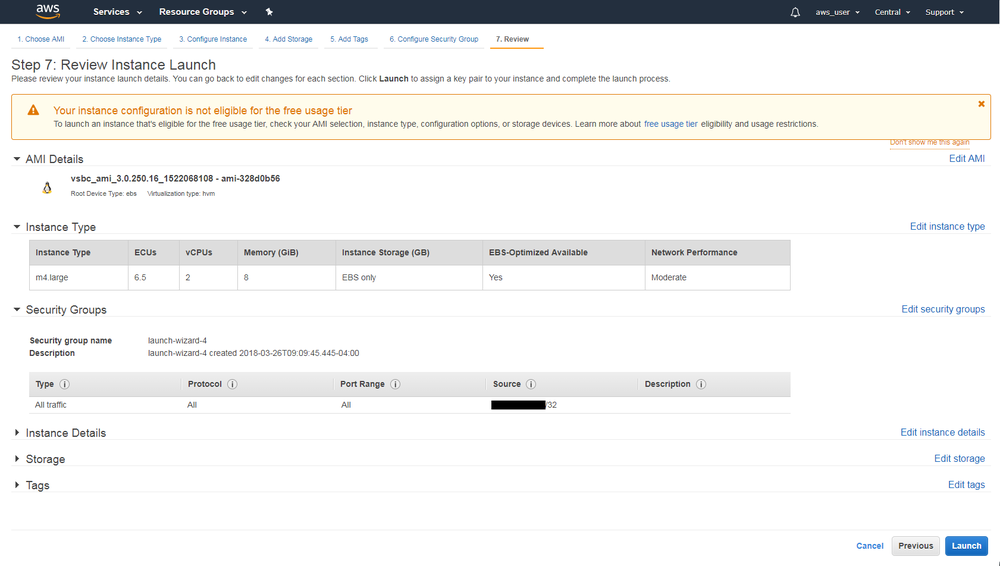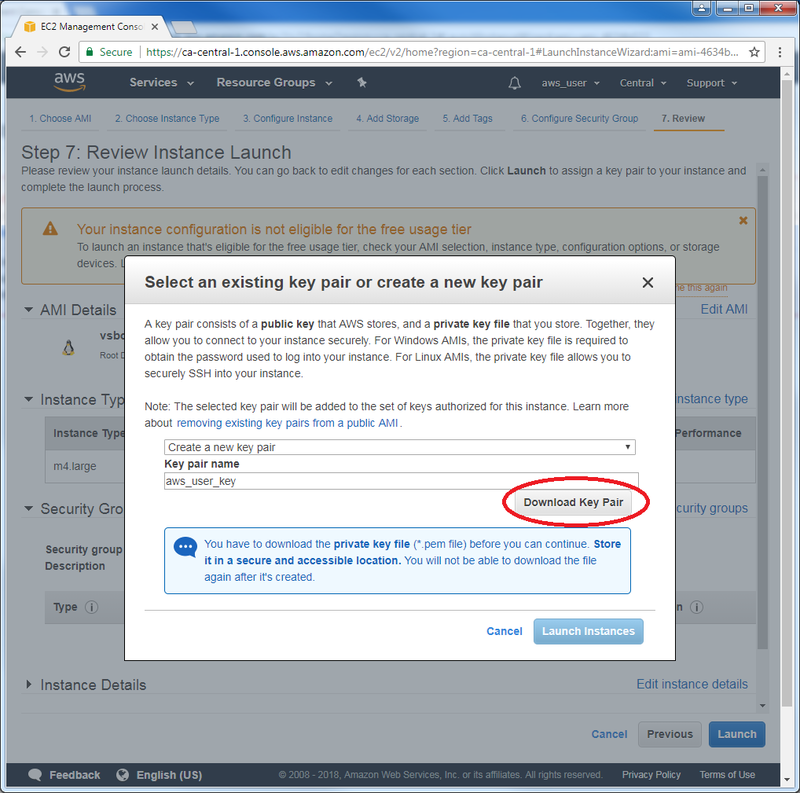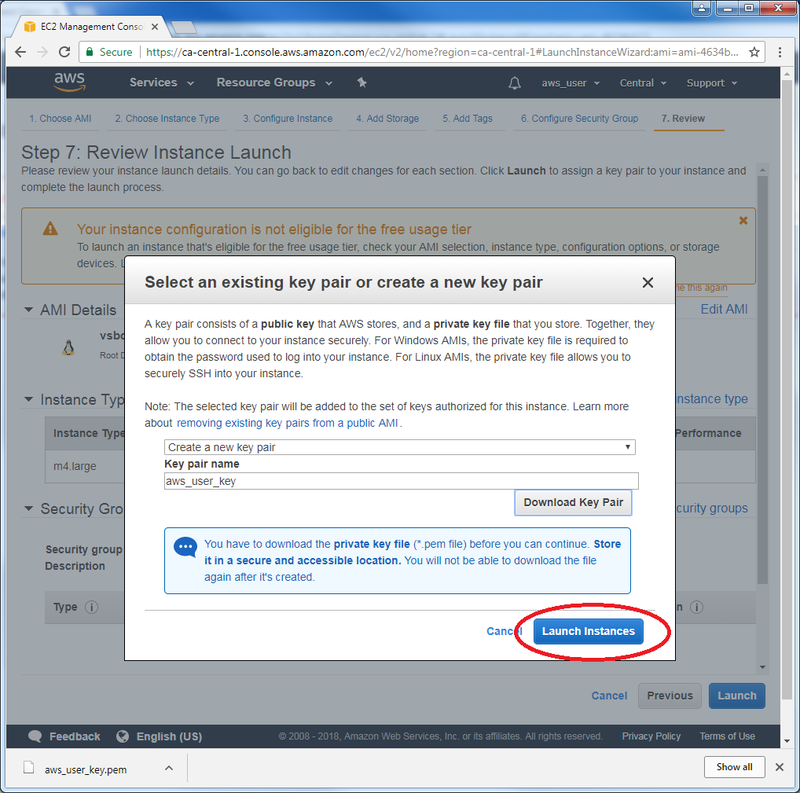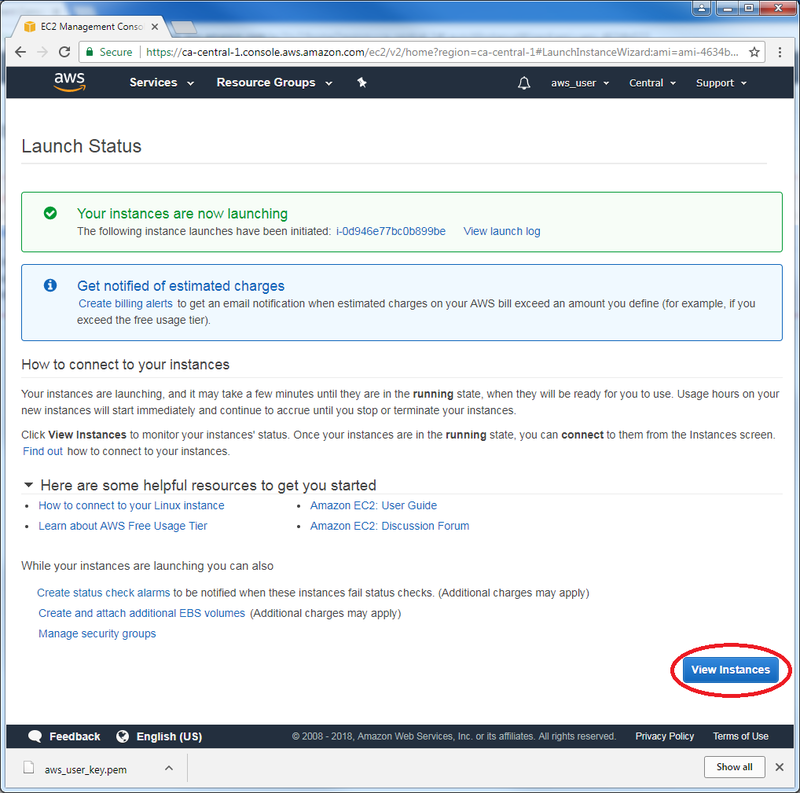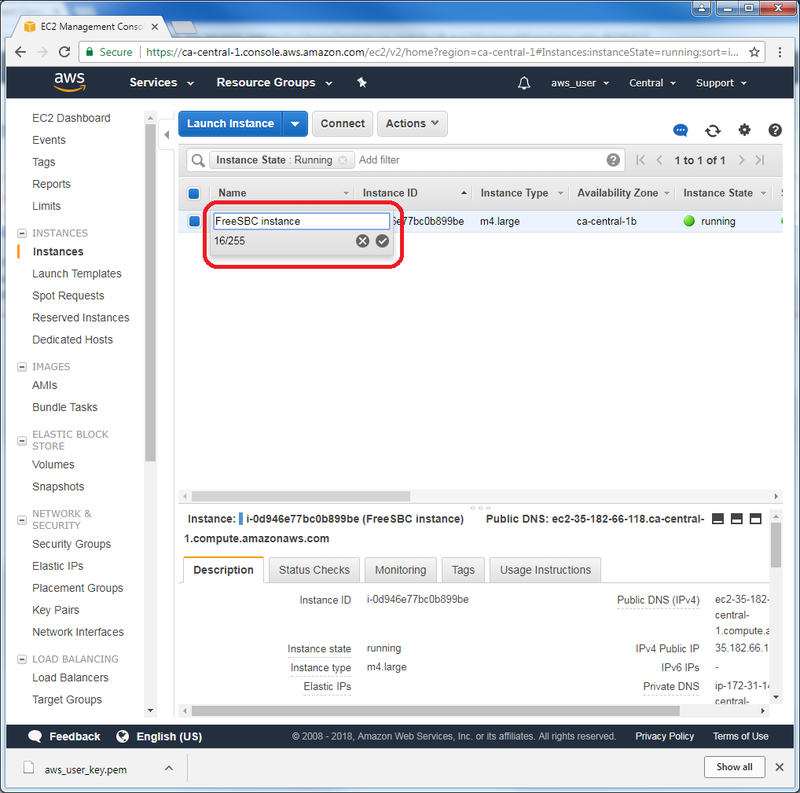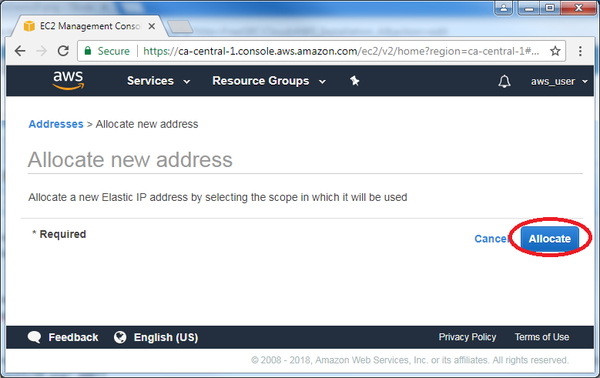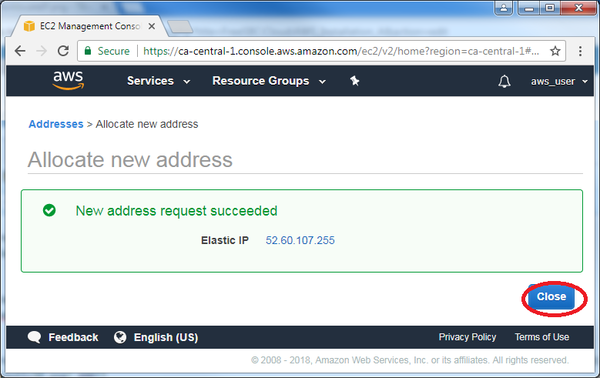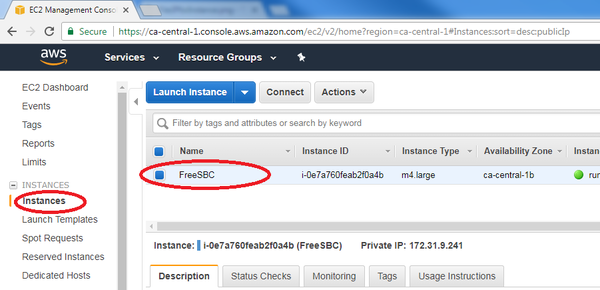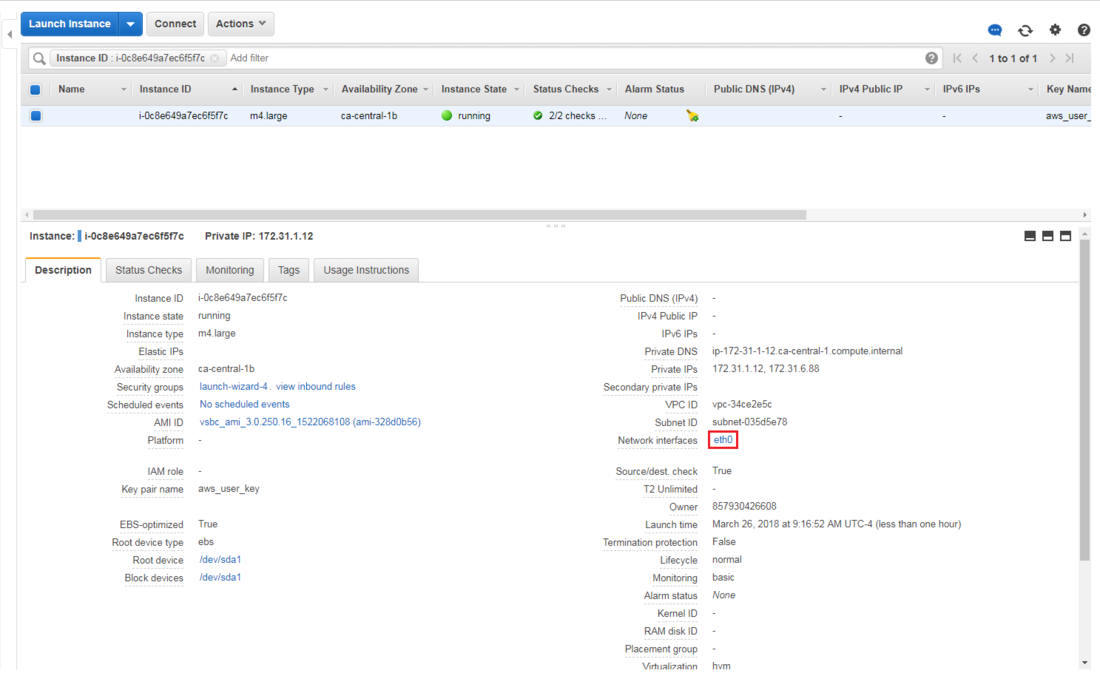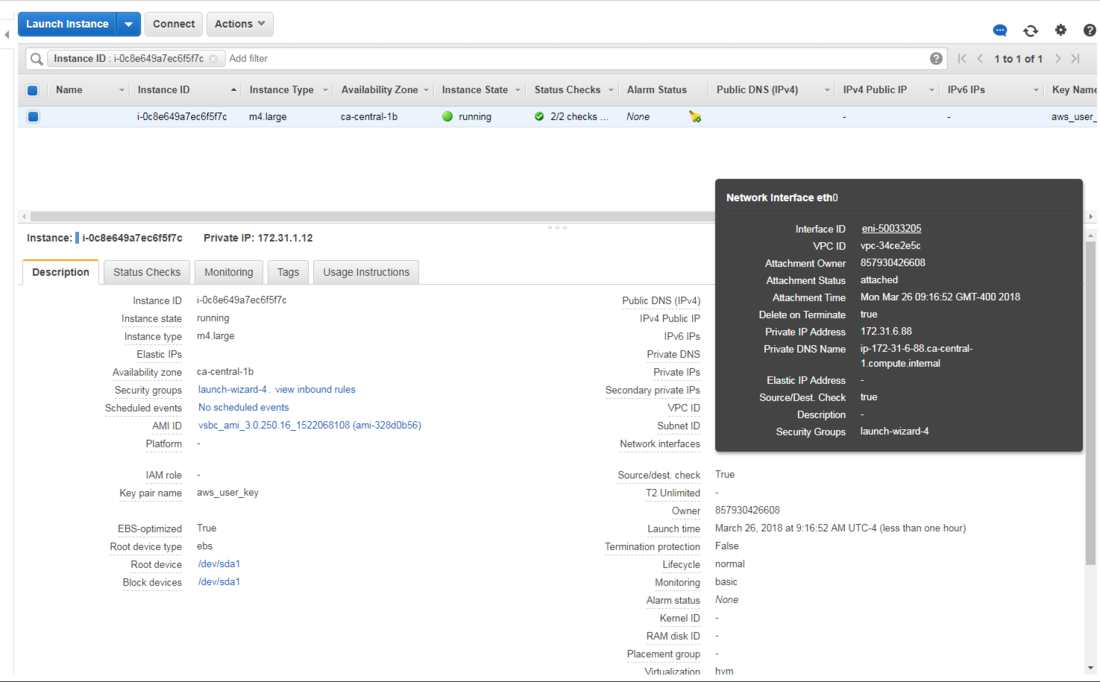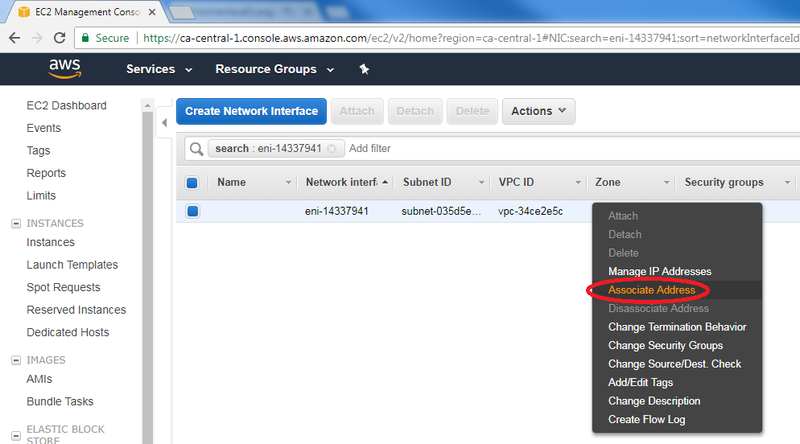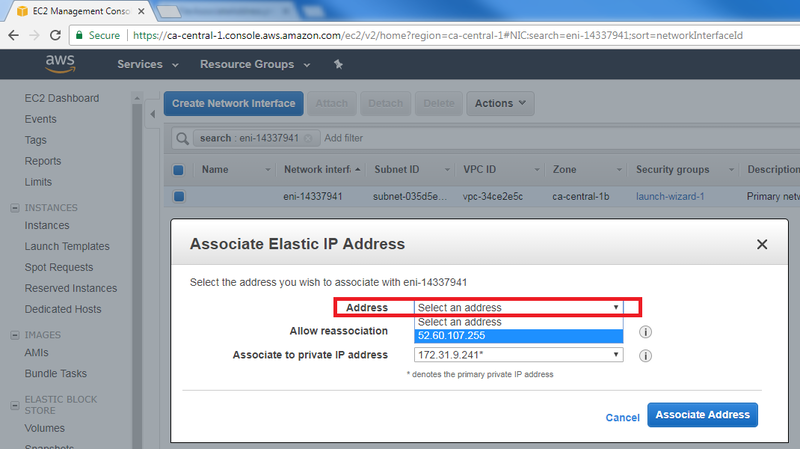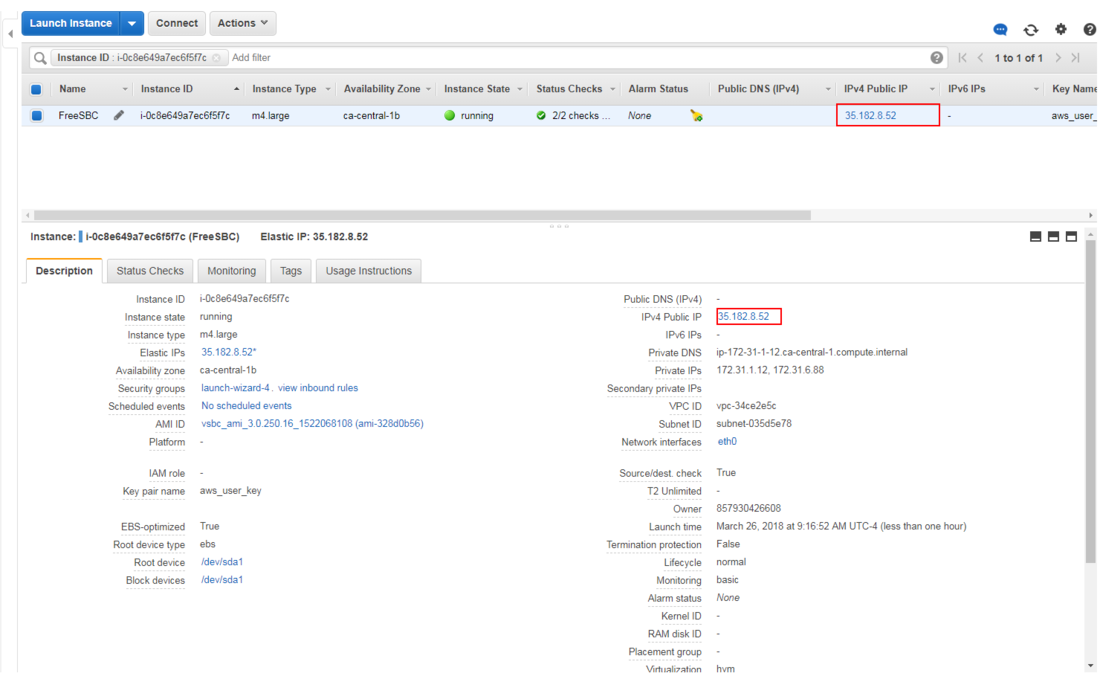FreeSBC:Cloud:AWS Installation A
From TBwiki
(Difference between revisions)
(Added Optional Elastic IP section) |
(Changed eth1 by eth0) |
||
| Line 91: | Line 91: | ||
[[File:IPforInstance.png| 600px]] | [[File:IPforInstance.png| 600px]] | ||
| − | * Find the ''' | + | * Find the '''eth0''' network interface in the instance description: |
[[File:GetTheRightNetworkInterface.png| 1100px]] | [[File:GetTheRightNetworkInterface.png| 1100px]] | ||
| − | * Click on the ''' | + | * Click on the '''eth0''' Network Interface, then click on the "Interface ID" link: |
[[File:InterfaceID.png| 1100px]] | [[File:InterfaceID.png| 1100px]] | ||
Revision as of 15:12, 14 September 2018
This page is intended to give assistance to people launching an instance of FreeSBC using an Amazon Machine Image (AMI) on Amazon Web Service (AWS).
Contents |
Instantiate a FreeSBC
- After logging in your Amazon account, click on “EC2” in the main AWS console:
- On the left menu, click on “AMIs”:
- Click on the filter drop list and select “Private image” to locate FreeSBC AMI:
- Select the region matching the region of the FreeSBC AMI you want to test. If you don't know it, try "Canada (Central)".
- Select the image and click “Launch”:
- Select the instance type and its resources. The recommended instance type is:
- m4.large (2 vCPU, 8 GiB)
- Supported instance type are:
- C3, C4, D2, I2, M4 (excluding m4.16xlarge), and R3 instances (Supported instances from Amazon documentation)
- Choose an existing subnet from the list (Do not leave it to default, to allow for multiple network interfaces or associate a public IP (called "Elastic IP")):
- Click “Add Storage” to proceed to the next page:
- Change the Volume Size to 40Gb.
- Select "Volume Type": gp2
- Check the box "Delete on Termination"
- Click “Add Tags” to proceed to the next page.
- You can leave the default parameters as they are.
- Click “Configure Security Group” to proceed to the next page:
- Select "Create a new security group". We recommend that you simply open all ports on your own IP address, since the SBC contains its own internal firewall:
| Rule | Type | Port Range | Source IP |
|---|---|---|---|
| All traffic | All traffic | 0 - 65535 | (Use your own public IP) |
- Click “Launch”. Please note that FreeSBC is free of charges. However, you will still be billed by Amazon for the instance resources:
- You will be prompted to create a key pair, allowing you to securely connect to your instance. Select “Create a new key pair” if you do not own one, and give it a name. Then, click on “Download Key Pair” to download a .pem file since it is needed for a SSH connection. (Note: Make sure to not lose it, since you would then lose access the the SSH connection for the instance):
- Click on “Launch Instances”:
- You can view your instance by clicking on “View Instances”:
- Select the instance you just created and feel free to give it a name:
Optional: Elastic IP Creation section
- If you want to use an associate public IP generated by Amazon (called "Elastic IP"). Click on "Elastic IP" on the left, then click on "Allocate new address":
- Click on "Allocate IP". A new public IP will be generated by Amazon:
- Click on "Close":
Optional: Elastic IP association section
- Go to the left pane and click on "Instance". Then select the instance "FreeSBC" to display its description:
- Find the eth0 network interface in the instance description:
- Click on the eth0 Network Interface, then click on the "Interface ID" link:
- Right-click on the selected Network Interface, then click "Associate Address":
- In the Address list, select the public IP to associate with the main Network Interface. Then, click on "Associate Address":
- Click on "Instances" on the left pane and select "FreeSBC" instance. Check if your instance is associated with a public IP:
It's time to connect
You are ready to connect to FreeSBC instance on AWS through the Web Portal. To connect to the Web Portal, use the public IP address with the port like this: <Public IP>:12358/
- Username:
- root
- Password:
- <The ID of the instance on which the web portal is running.>
Take note that it may take a while for the FreeSBC system to make the Web Portal available (around 3-5 minutes).
Validating the installation
To test that the FreeSBC was correctly installed, you can call a special number via any SIP phone to get an automated message from the FreeSBC
- Call the number 5551234@<FreeSBC's public IP address>
You should get a message from the FreeSBC along with a "special treat" :).

